… WHAT WAS I THINKING?!?
Yes, I absolutely should have known better, but the day looked great, the air warm but not hot, the breeze gentle, so … I tried.
Heading out around 2:30, I was optimistic. Air temp, in a warmer section of the initial drive, was only 82° and the breeze held steady and soft. I did, however, see the frequency of other people pulled off in various places, with water access, was quite high. At less desirable days/times, I can make the entire drive and only see maybe 3-5 people. On this drive, it seemed like dozens.
Again, I should have known better.
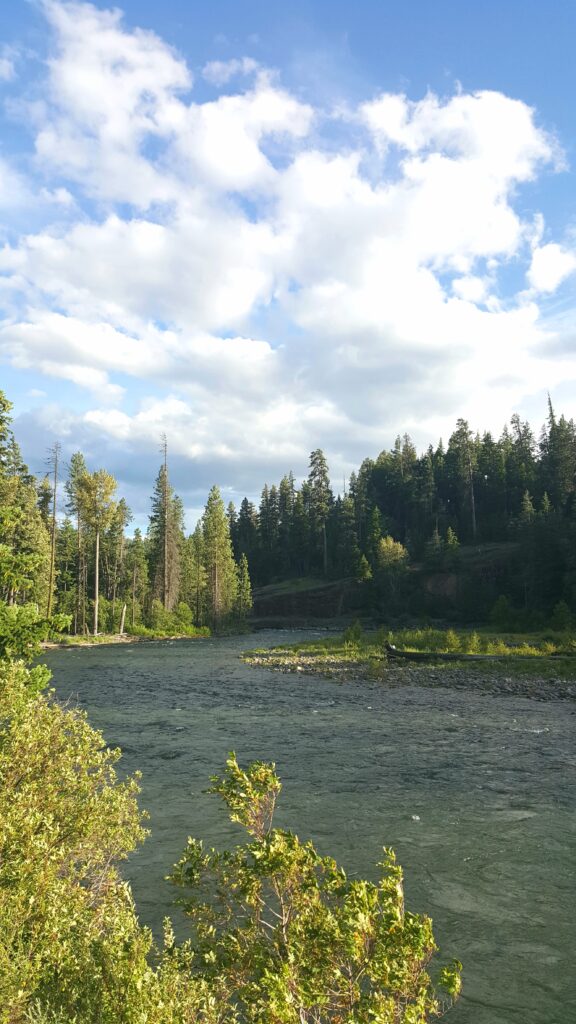
The problem was that the day was beautiful. My only hope was that the Little Naches River, as is so often the case, might be missed by the crowds. As a small tributary of the actual Naches River, it does not get the larger trout, the deeper pools, etc, so it is often the case that it lacks for attention even on such nice days.
On this day, that actually held true! Zero fly fishers found in any sections, as I drove up the FS Road,
Unfortunately, almost all of the great spots were occupied, instead, by families….with kids….that seemed to enjoy throwing rocks (or themselves) in the river as loudly as humanly possible.
Sigh.
In truth, I like seeing this. It shows me that some families still value time in nature and are bringing up their kids to feel this way, too. Sometimes, I end up with kids off in the distance watching me cast, and wonder if they might, someday, pick up the habit.
I did finally identify one spot that was vacant, parked as close as I could, and stepped out to get ready. Then, the wind hit me.
Sigh, again.
Okay. Pause, mentally prepare, gear up, then walk downstream and prepare for combat casting.
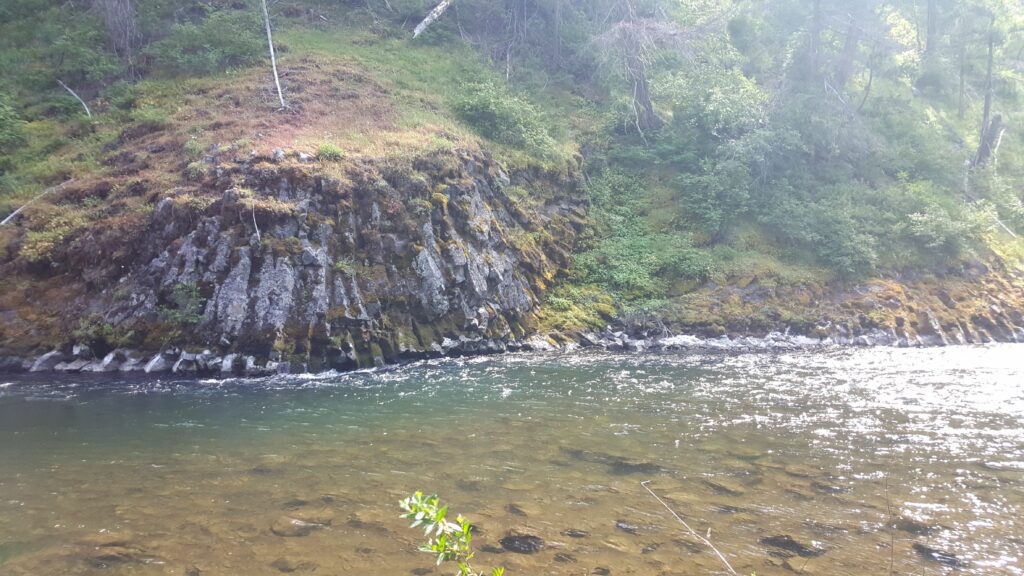
This was the first point of entry into the river. The drop in CFS made a huge difference, compared to my visit on the Fourth. Now at about 175CFS, where it was 270 on the previous stop.
What the pic does not give you, though, is just how rippled the surface was, from the wind blowing directly down the path of the river. This clip has a bit of it, though. Watch the trees, on the right, especially.
It ended up being what I sometimes call a “Statue of Liberty Trip.” You know, where you stand with rod held high, a few feet of line extended from the tip, and your leader/tippet trailing in the wind (not even touching the water!). I tried this section for maybe 45 minutes, holding this pose during the long rushes of wind, so I could drop and cast in the small gaps between.
One bright point: I must be continuing to improve my casting path (still “Ugly,” though), as I never tangled or knotted anything and managed to get the fly into some fairly small target areas, throughout. I have to feel good about that.
The other good thing about the CFS coming down is that I didn’t need to come out, walk up the bank, then re-enter much, at all. Very wadable, even out in the middle, allowing me to short cast to just about anywhere I wanted to reach.
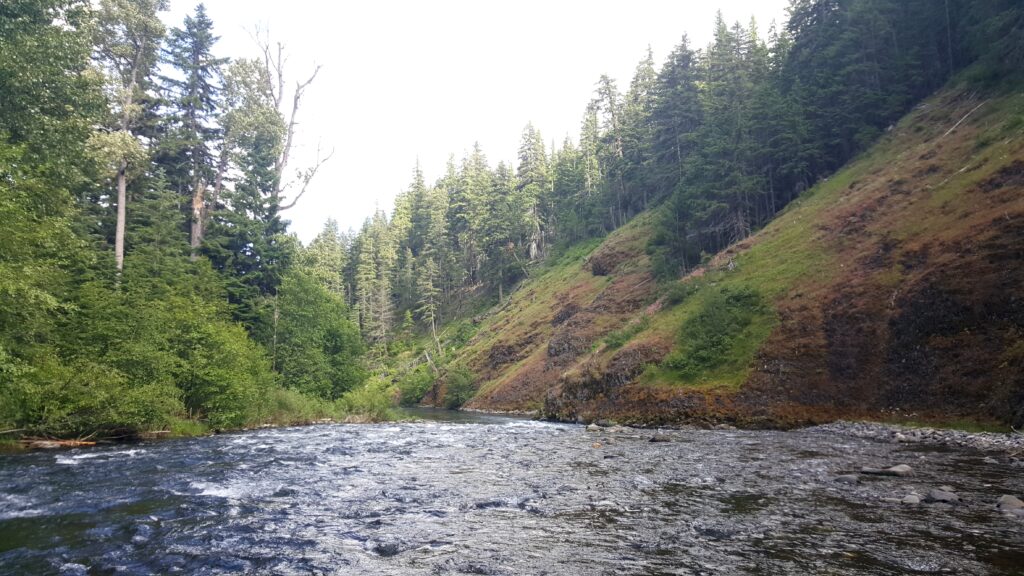
Wading up, I eventually came to my favorite spot, where the deep pool has some of the larger trout in this area. Still challenging to cast into or around, but definitely getting better.
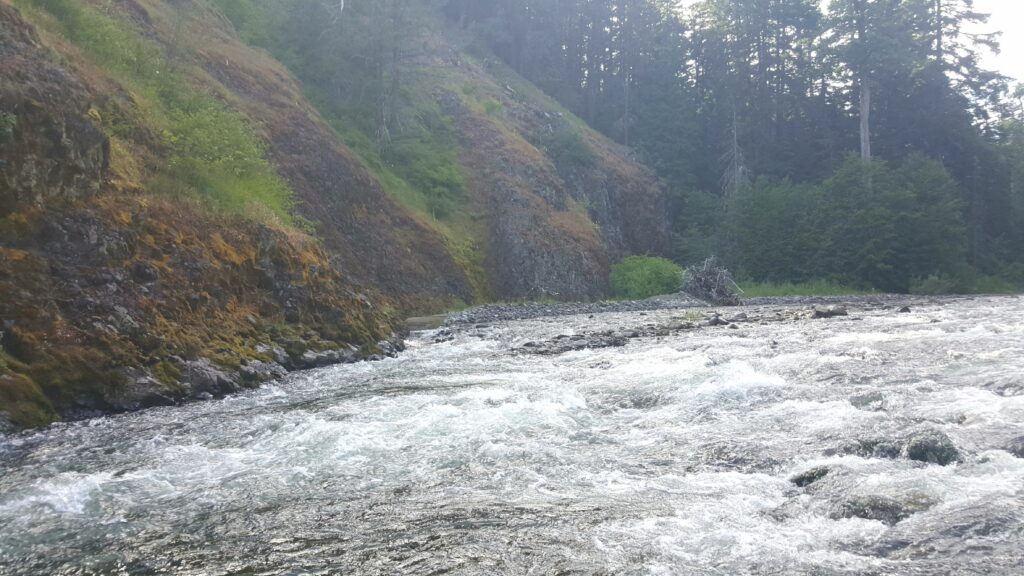
You see that rough line, from the bottom-right corner to right about the middle of the image, were the water looks like it is rolling over a final hurdle and into the tail waters that then rush past the rock wall on the left? As the water levels continue to drop, this will become almost like a 9″ waterfall, with beautifully defined and separated tails below in two or three sections. Once it gets to that, the gaps between are excellent holding spots to drop flies into, high-sticking to keep as much line and leader off the tails as possible. At the right flow, you can work the closest one for a while, then start carefully working across that shelf of rock as you cast into the next, then the last, with whitewater tails obscuring the image of you, from the trout in the seam space you’re targeting.
If you crouch.
If you’re careful with line and rod tip placement.
If you manage to keep your footing.
I’ve pulled a 15″ rainbow out of this area, before. I know they’re in there. Not huge, in the overall scheme of trout, but for this little river…
Not there, yet, though.
Pausing to line up for a cast, and considering a change of dry fly, I looked down to discover that the cased caddis I was seeing on multiple, previous visits were still growing and clinging to the rocks.
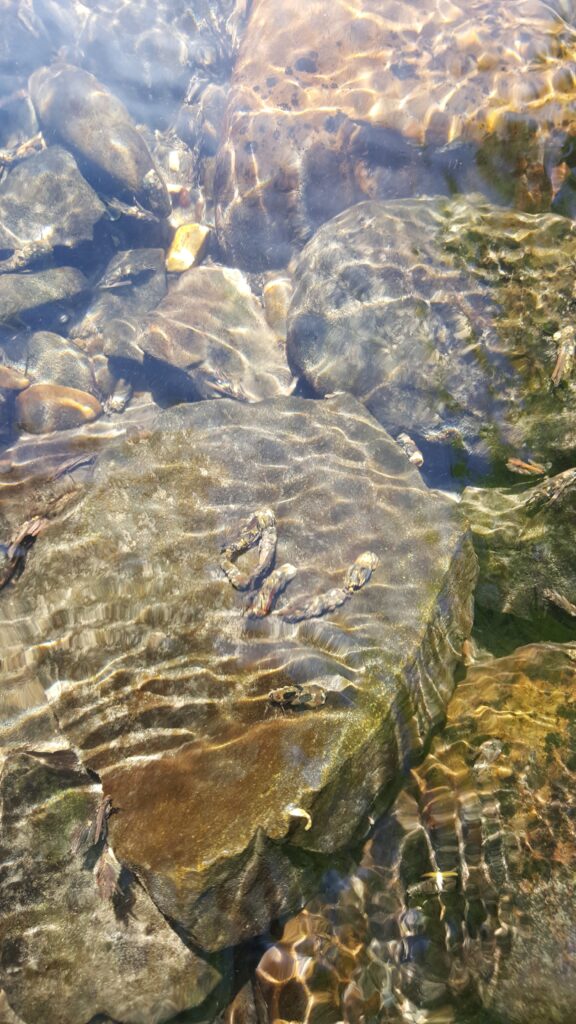
When those finally hatch…It’s going to be amazing. I just hope I am on the river during some part of it.
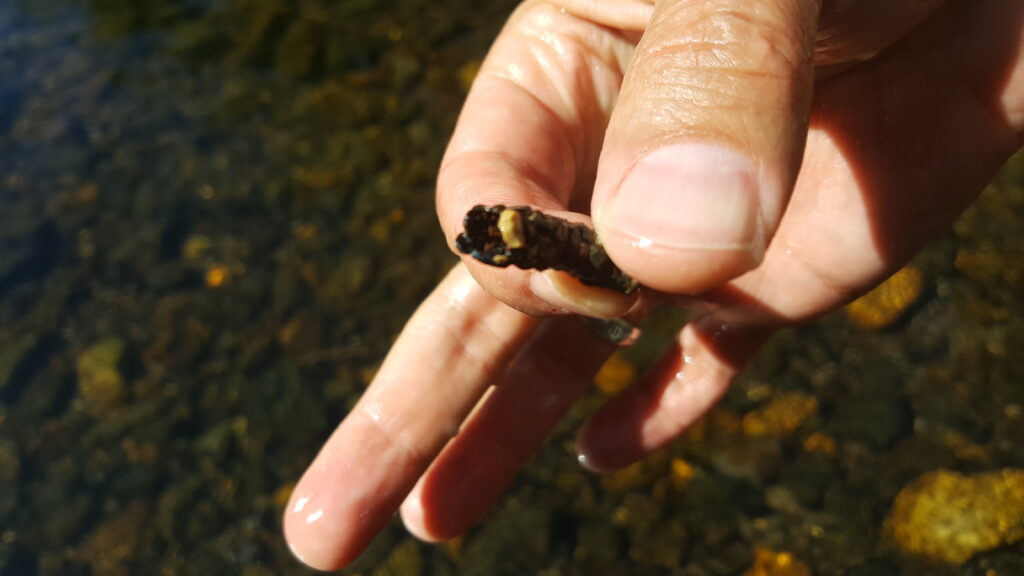
Definitely not your #16 hook size, given how large these cases have become. I’ve never been accused of having small hands, and I suspect this sample was probably a full 1″ long, when I picked it up.
Mental note: Tie some larger Elk Hair Caddis, in dark colors.
Moving up to the top of this riffle, I found that I could finally wade across to the opposite side, then work my way up, casting into the long run with reach casts to allow for maximum dry fly drift, between mends. This run also has some nicer trout in it, and great space for back-casts with not overly complex current churn.
Unfortunately, it was also immediately downstream from where one of those families had set up, and they were only just packing up as I got to this stretch. As a result, I didn’t expect to catch anything (I had two splashy attempts by very small/young trout), but took this as casting practice. Thankfully, right about the time I was lining up to start working this stretch, I noticed that the wind was finally breaking up. I thought, at first, that it was the shielding effect of the trees at my back, and the change in river direction, but I could see that the tips of trees in the distance weren’t being bent as far, either.
When I got to the top of the run, where it is fed by the tail-out of another long riffle stretch, I turned back, roll-casting as I returned down to the point where I could wade back across, then made my way to the vehicle. Time to see if there was still a family around that deep pool, where I had picked up on strong hatches during my previous visits.
Thankfully, they had left by the time I got there, so I was able to get in a second tour of wading!
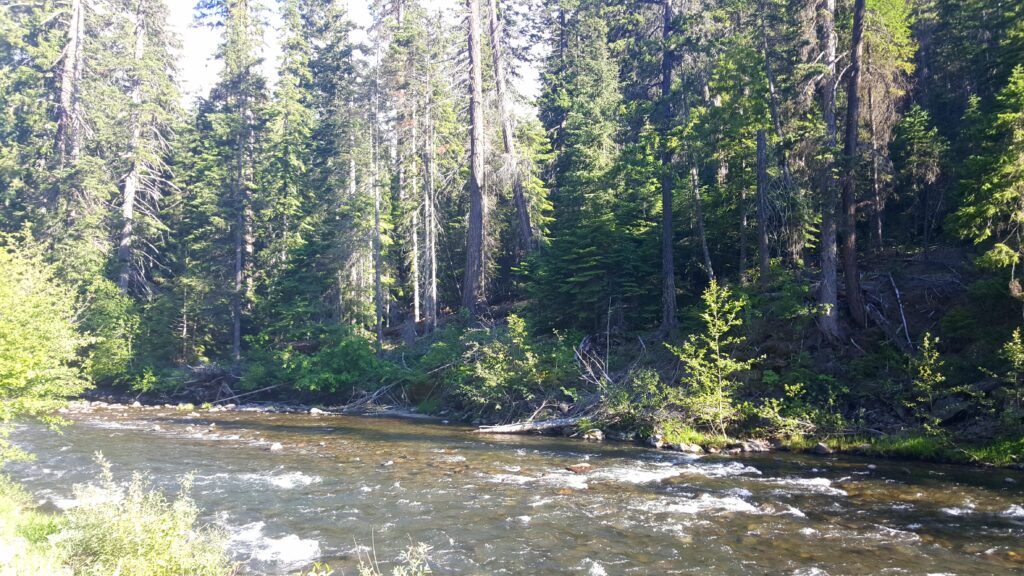
This river just never gets old.
I moved well downstream, and trekked through the brush to a point where I could cast and wade up to the area just below that target pool.
At this water level, I was able to wade out to the middle, where there is a rocky ridge with quite shallow edges, then cast to both banks. The side I had originally approached from has some excellent overhanging brush, so it’s a great stretch to work on targeting the distance to get the fly close to shore but not tangled.
This, in turn, leads to the pool and bend below the riffles flowing out of the deep pool.
Next test, coming up.
Casting into that pool from the area of the downed tree (See Father’s Day post) is great, but only gives you access to the “downstream” and eddy part of the pool. Casting beyond the halfway point gets you into some horribly conflicting surface current with strong upwells. Hard to get past that, even with a heavy wiggle cast, and get more than a couple of seconds of stillness with a dry, if you get lucky.
The solution is to wade through the riffle below, and fish your way up the far bank, to gain access to the “other side.” What makes this challenging, however, is that this is one of the narrowest portions of the river, so even a relatively low flow rate makes this stretch fast and forceful.
Key learning: At 175cfs, I can make it across! That may well become one of my threshold points to key off of, going forward.
Access to the opposite bank means being able to approach and cast into this area…
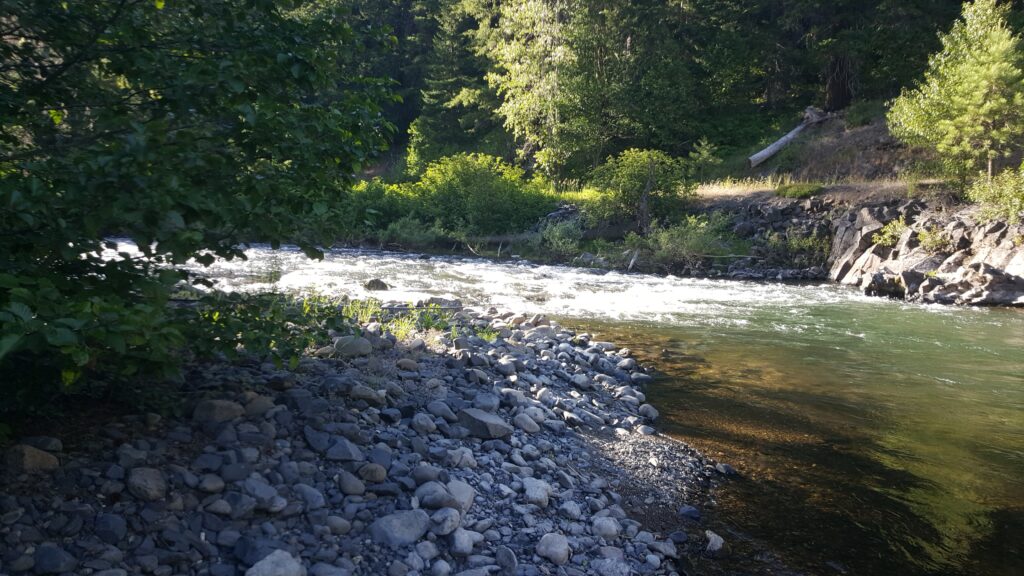
I love this spot. Right about where that nearest whitewater tail fades out, the bottom drops dramatically. Great hide for larger trout, but the tails are also split, the near edge seam flows over water deep enough for larger trout to come up and feed, and even the little fish come out to try and get flies that are far too large for them.
Unfortunately, with the previous humans probably having only left a bit before I arrived, and quite likely having spent a couple of hours scaring the piscatorial residents with their play, those small/young fish were the only one’s willing to connect with my dry fly.
Still, just being in this location brings me joy, so no harm, no foul.
After a while, I waded back across, cast into the pool from the opposite side, but still never saw any of the larger occupants come out. I even waited and watched for a bit, as a mayfly hatch kicked off, and never saw any surface feeding, including in some patches I had specifically not cast into, but have previously (and quite consistently) observed takes from the film, on other occasions.
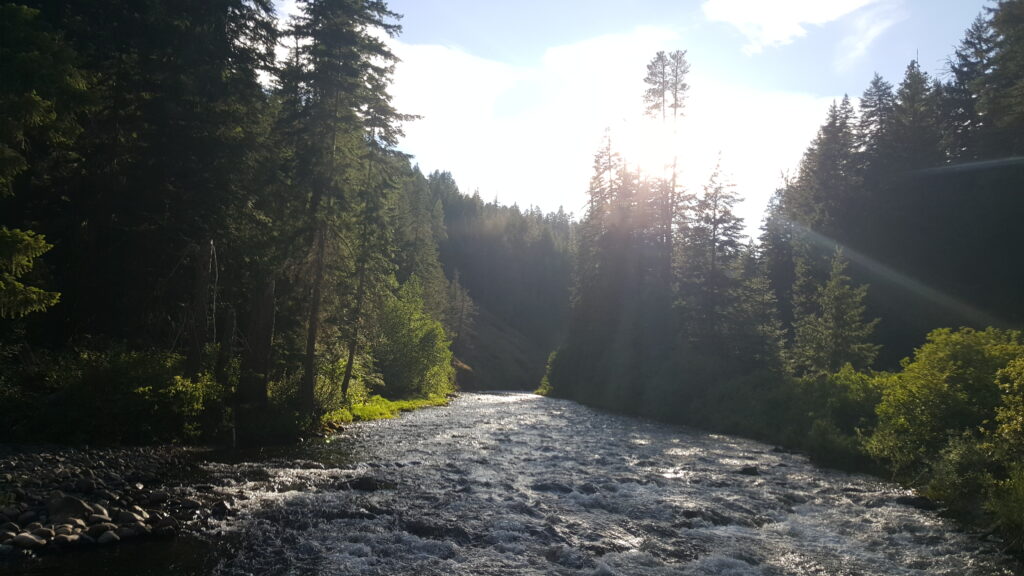
Walking out on the rock shelf that overlooks the pool and the bend towards the riffle, this was the view, upriver. That rocky bit on the left was where I ended up, when casting into the tails and opposite side of the pool. What a gift to be able to get to a place like this.
I brought that batch of Yellow Sally imitations I had tied, but there were no real ones to be found on or around the foliage in this river valley. I tied one onto the line, for a bit, but got no interest at all. It did float nicely, though!
I hope everyone had a great weekend, and that this week is also excellent for each of you. More to come, I am certain, but I have some projects to focus on, so there may be a bit of a gap.
We shall see.
Tight lines…
